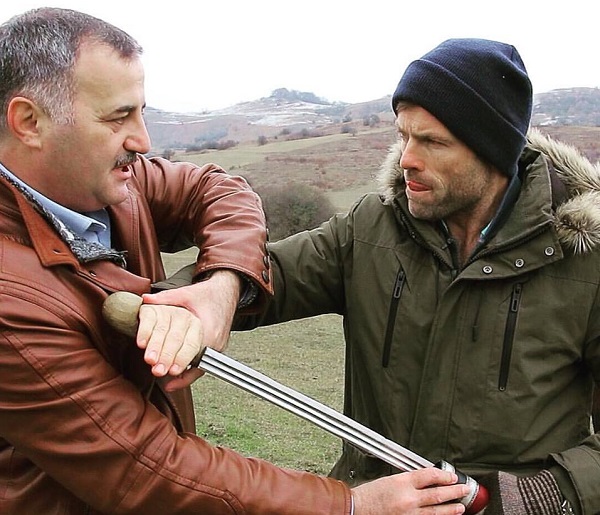“My words won’t be compelling unless I demonstrate one movement.”
I am shifting from foot to foot, holding a wooden plank.
The director of the National Museum of Kabardino-Balkaria, Felix Nakov is standing in front of me like a cowboy from a western. In his left hand he is holding an ornate scabbard from which the tip of the sword handle is scarcely visible. It seems hard to pull it out. But Felix makes an imperceptible movement, and something whooshes past my nose: the plank split in the middle, as if by itself.
“The sword (“shashka”) is sitting in my palm like a bird,” the contented scholar explains to me, brandishing the blade. “You can neither hold it tight (or you’ll choke it), nor release it (or it will fly away from you). That’s why the strike is so powerful. I can easily hack a sheep carcass into two, let alone a pumpkin. The sword is the fastest first-strike weapon. I pull out the weapon, grab the handle, turn it around, make a strike and halt. It takes a split second. To make a swift and powerful strike, the hand shall be relaxed. One shall not tighten one’s wrist. The weapon works in the palm of the hand, like a joint. That’s why classical shashka handles are forked at the end, and shaped like a bone. The Russian poet Alexander Pushkin in his “Journey to Arzrum” succinctly noted that for the Kabardins, daggers and swords are, essentially, limbs.”

Felix Nakov teaches Johnathan Legg from «Road Less Travelled» TV-show how to pull shshka out from scabbard.
 Skip to content
Skip to content
